Dry Toilets in Latin America

In the rural and semi-urban communities, that are the main target of the housing projects from the EcoSur network, sewer systems are non-existent and sewage disposal becomes a problem, sanitary and economic. The Dry Toilet, developed in Namibia by the Clay House Project*, has become an adequate and inexpensive solution for countryside communities and outskirts.
In order to probe the successful experience in Namibia, in 2007 EcoSur Ecuador built the first dry toilet "Otji" style in Latin America, in the province of Chimborazo, at 2,800 meters above the sea level, under very different weather conditions to those in Namibia.
This Dry Toilet was closely monitored through two years to verify that the technology could be applied in the weather conditions of the highlands of Ecuador: cold and humid, with an average temperature of 12°C. This sanitary solution was a success.
Curiously, when this first toilet was monitored, in many cases, the floor of the bathroom was wet. When asked, the owner told that, as they don't have a suitable place, they used the dry toilet as a place to take a shower. Then, the basic floor plans of the dry toilet were redesigned to include a small space for a shower.
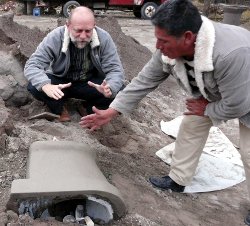
the urine diverting toilet bowl
At the beginning, the toilet bowl used by the Dry Toilet was very simple, without the water trap. The solids and liquids felt directly to the drying buckets under the surface. In 2010, Peter Arndt, the "inventor" of the dry toilet visited Ecuador with an idea and a design: develop a new toilet bowl with liquid separation. Together with EcoSur technicians, a Urine Diverting Toilet Bowl was built and that is the one that is now used in all the Dry Toilets built by EcoSur network around the globe. This new toilet bowl transformed the Dry Toilet in an UDDT: Urine Diverting Dry Toilet.
Using the new toilet bowl with urine diverting, a small project of dry toilets with shower space was funded in two cantons of the province: Guano and Chambo.

The "Santa Marianita" neighborhood in Guano is built over a volcanic soil, with big rocks just under the surface. Due this, sewer system is almost impossible to build, as well as too expensive. In this site, 28 Dry Toilets with shower were built in private houses and 2 public-use dry toilets in the main plaza.
The Chambo canton has a very particular characteristic: Many families work in the artisanal brick making industry. They dig the clay from their own land and when the clay is depleted, a lot of families build a house 4 or 6 meters below the original land level. Because of this, build a "normal" water toilet is impossible, because the sewage can't be taken to the sewer system. Fifteen dry toilets are built in Chambo in houses below the sewer level and in remote rural communities.
The municipalities of Chambo and Guano have saved a lot of resources with this intervention, because the Dry Toilet does not need a sewer system. The cost of a sewer system, depending upon the the place and geographic conditions, can rise up to USD 1,000 per lineal meter, without the cost of building and maintenance of a wastewater processing plant.
Besides, with the added shower space, people in rural communities have now a private space where they can wash themselves after the daily job, with safety and away for an indiscreet neighborhood. It solves a problem not only of hygiene, also, modesty and self-esteem are improved.
In August 2010, a technician from EcoSur Ecuador travel to El Salvador, Central America. During a week, technicians from Nicaragua and El Salvador received the technology transfer to build in their own countries Dry Toilets. After this, 200 toilet bowl seats with urine diverting system where shipped from Ecuador to El Salvador to be used in the social housing projects from ACAMS**
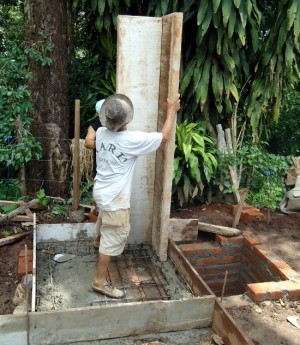
Building the first dry toilet in El Salvador
From Ecuador, the technology flew to Haiti where the EcoSur team learnt the skills to produce the urine diverting Dry Toilet bowl. To the date (October 2011), almost 60 Dry Toilets have been handed over the most needed people affected by the earthquake in Liancourt, Jacmel and Petit Goave.
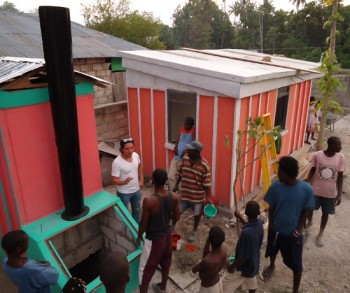
In Ecuador, El Salvador and Haiti, the Dry Toilet technology is supplemented with the MicroBen technology (effective microorganisms, EM) that helps to compost and eliminates the very few odor from residues.
Other organizations and individuals have expressed interest in this technology because the Dry Toilet is a solution for many geographical areas. Ventilation with the use of solar heat and the urine diverting toilet bowl causes the odors to be minimized, thus, improving the acceptance of the population. The shower cubicle improves hygiene and privacy in the family. Diverting liquids can be used as a fertilizer. Dry Toilets avoid further pollution of water resources.
And above all, it saves water that has been purified and transported, sometimes hundred kilometers away and it is wasted in the flush toilet.
More information:
--
*Partner in Namibia of the EcoSur Network
**Asociación Cooperativa de Ahorro y Crédito Mujeres Solidarias, partner of EcoSur in El Salvador
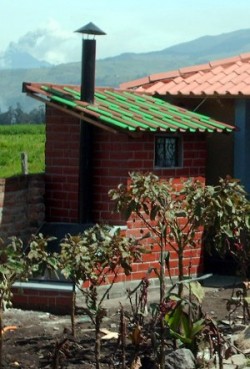
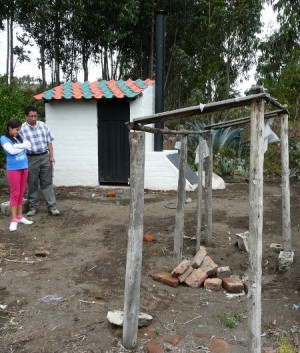
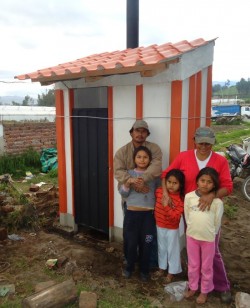




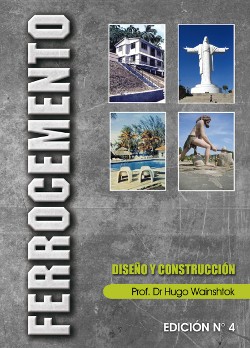 (Available in spanish only)
(Available in spanish only)
